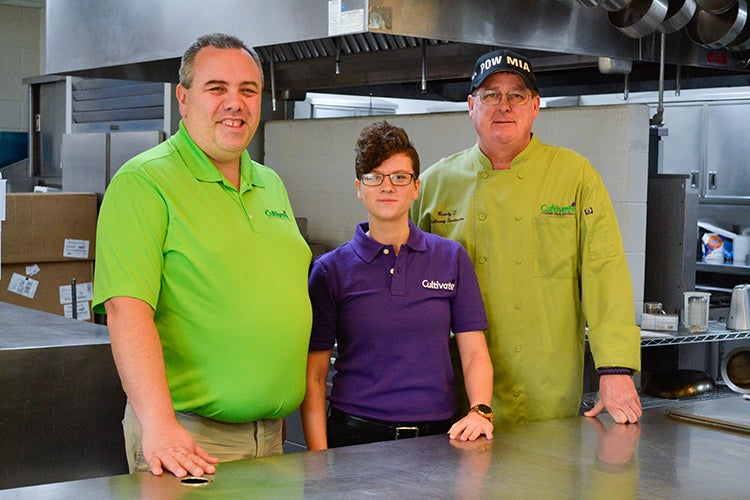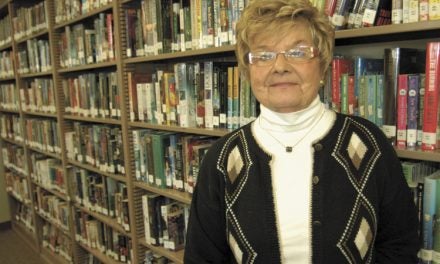America is the land of the free and home of the brave, and as it happens, the United States is also the land of great waste.
With everything from food to raw materials, the statistics of how much is consumed and how much more is wasted in the United States are staggering. An estimated 40 percent of all food in the U.S. is thrown out, and most of that 40 percent is from residential and restaurant waste. What is worse is not all of the food thrown away has gone bad — it’s just excess that was not used.
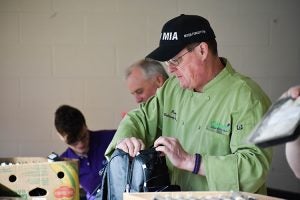 The question that is appropriately posed for the wealthiest country on earth and simultaneously one of the most wasteful countries is, “Can that excess food be used to help the poor?” But Randy Z and Jim Conklin posed the question in a slightly different way: “Can that excess food be used to help anyone who has come up short on resources?”
The question that is appropriately posed for the wealthiest country on earth and simultaneously one of the most wasteful countries is, “Can that excess food be used to help the poor?” But Randy Z and Jim Conklin posed the question in a slightly different way: “Can that excess food be used to help anyone who has come up short on resources?”
With their 501c3 operation, Cultivate Culinary School and Catering, Randy and Jim found a way to reduce food waste in South Bend while filling pantries, backpacks and stomachs of hungry people.
Cultivate began in 2016 as a culinary school for students attending The Crossing, an alternative education program with a campus in South Bend.
Randy, with a history as a one-time cooking show host and head chef, and Jim, with experience as an accountant, began their nonprofit simply to help young people learn new skills that would get them jobs in food service. But when Jim and Randy visited Second Helpings in Indianapolis, an organization that rescues excess food and distributes it to local food pantries and charitable organizations, they knew they happened on the missing piece of their own efforts to combat hunger in South Bend.
“Basically, we walked into a 20-year-old food rescue operation and thought it was really impressive. We wanted to replicate it in South Bend, Indiana,” Jim said.
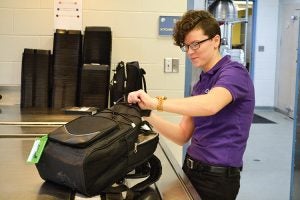 Food rescue essentially comes down to connecting with organizations and entities that mass produce, serve and sell food, and providing them an alternative to throwing away food that was not eaten or served, but is otherwise good for consumption. Restaurants and catering businesses that prepared too much food, grocery stores and produce markets with excess items, and varieties of dining facilities and food vendors with leftovers after events are the sorts of organizations Cultivate partners with to collect and disperse food.
Food rescue essentially comes down to connecting with organizations and entities that mass produce, serve and sell food, and providing them an alternative to throwing away food that was not eaten or served, but is otherwise good for consumption. Restaurants and catering businesses that prepared too much food, grocery stores and produce markets with excess items, and varieties of dining facilities and food vendors with leftovers after events are the sorts of organizations Cultivate partners with to collect and disperse food.
Cultivate is a “food logistics business,” as Jim described it. The organization takes excess food, prepares it for distribution and bring it to local food pantries and community-based charity groups to be served.
“We’re very similar to food bandit that rescues food from grocery store, or a gleaner that goes out and takes leftovers a farmer hasn’t been able to harvest,” Jim said. “We’re a different spot in the food supply chain.”
Because of the nature of its business, Cultivate has stringent food safety and ethics standards. Rescued food is never taken off a buffet, but is only that which was prepared and not served. Any rescued food has to be temperature checked and properly cooled before being packaged, and is prepared by trained and certified food handlers.
Aside from abiding by the obvious expiration dates, Cultivate also follows the simple “when in doubt, throw it out” mantra and litmus test.
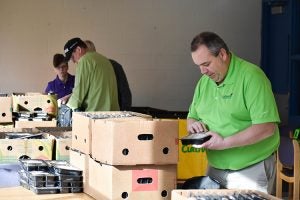 According to Jim and Randy, educating the public on what food rescue is and is not is as important as finding food donors and feeding people. Food insecurity is not only a problem among the homeless. It’s a pervasive issue for households in the lower middle class that struggle to make ends meet, and for people with disabilities and limited mobility.
According to Jim and Randy, educating the public on what food rescue is and is not is as important as finding food donors and feeding people. Food insecurity is not only a problem among the homeless. It’s a pervasive issue for households in the lower middle class that struggle to make ends meet, and for people with disabilities and limited mobility.
The mission of Cultivate is not just a nice idea or creative solution for Jim and Randy, however. For Randy in particular, the mission of Cultivate is a full circle path connecting him to the needs of his own past. As a child he did not always know where his food was coming from.
He often went without meals and still remembers the pain and emptiness of prolonged hunger. The food scarcity and insecurity in his upbringing taught him to be judicious, pragmatic and creative with food, skills which he tries to pass down to students through Cultivate’s culinary training.
“I always knew that I would make a difference. When I had a chance to decide what I wanted to do, culinary arts was something I had to conquer,” Randy said. “People ask, ‘Why are you so passionate about this?’ and I ask them, ‘Have you ever been put in a dumpster and told to find something to eat?’ That’s why I do this.”
Because of his background, Randy believes no child should have to go hungry because of circumstances that are out of his or her control. Cultivate recently started a new backpack meal program to continue the work of getting food directly to children.
“We’re helping people get through their tough times. ‘Here’s one less thing to worry about today,’” Randy said. “We work with partners in the community to take care of kids and get kids nourishment they need.”
 It’s not just the excess and waste, statistics and numbers, personal experience and conviction that drive Randy and Jim and Cultivate’s mission. The mere opportunity that exists in South Bend to bring good, balanced food to meet the needs of South Bend’s hungry was reason enough to create an option for redistribution.
It’s not just the excess and waste, statistics and numbers, personal experience and conviction that drive Randy and Jim and Cultivate’s mission. The mere opportunity that exists in South Bend to bring good, balanced food to meet the needs of South Bend’s hungry was reason enough to create an option for redistribution.
Cultivate works with Notre Dame, Nelson’s Catering and Fundraising, the Century Center and many other organizations in the greater South Bend region to rescue food. After Cultivate repackages the food, it then goes to places like Milford Food Bank, Upper Room Recovery, St. Margaret’s House and several other organizations.
“We have a heart for helping people who are resource stretched,” Jim said. “It’s the nature of who we are.”
Cultivate still trains students in the culinary arts, but food rescue became the niche and defining component of its mission fight local hunger.
While Randy trains another generation to feed themselves and those around them, he and Jim and their team of volunteers continue to show there is more to combating hunger than simply making more food.

